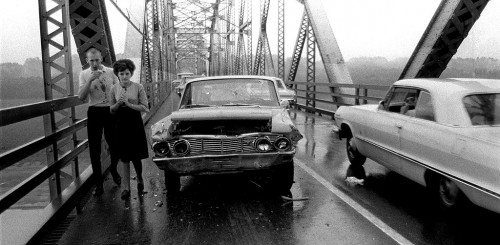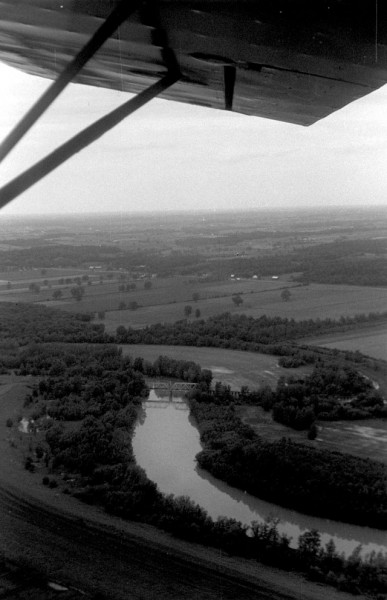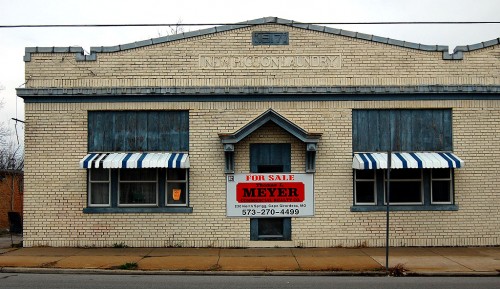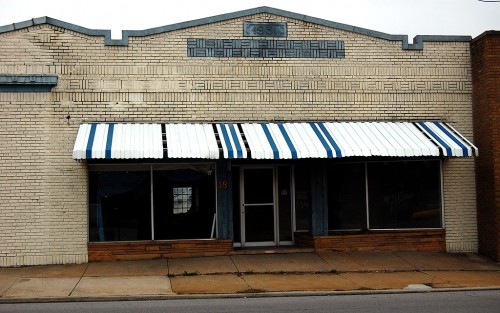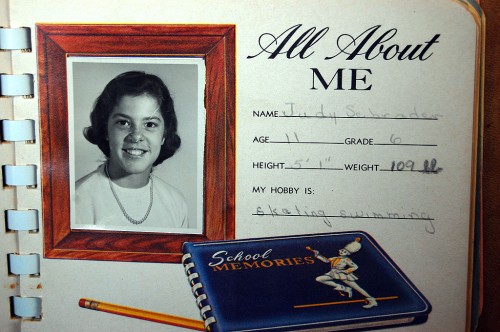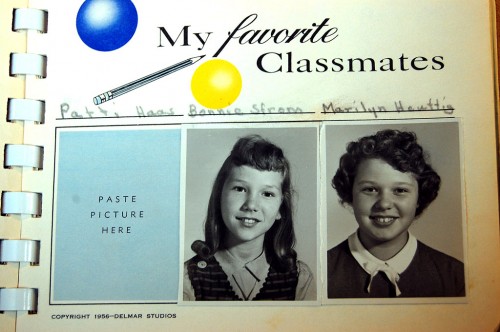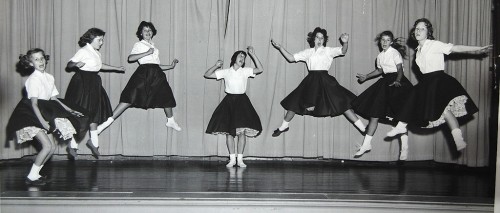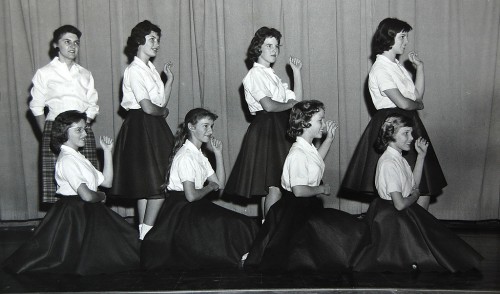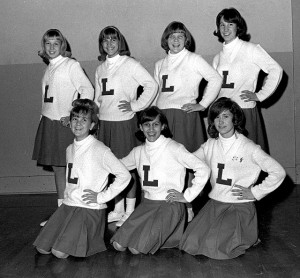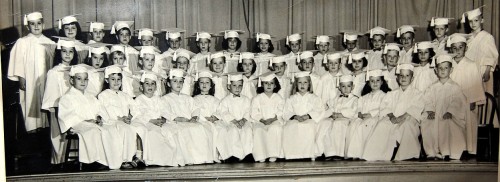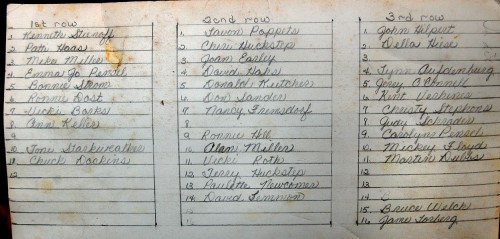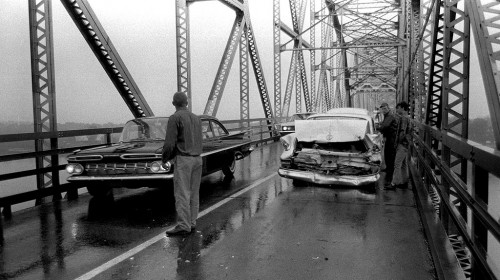 Crossing the bridge was a rite of passage
Crossing the bridge was a rite of passage
Crossing the Mississippi River Traffic Bridge was a rite of passage when you first got your driver’s license. No bridge in the world ever felt higher, longer or narrower. It didn’t just LOOK narrow, it WAS narrow. It was common to see splintered reflective glass on the deck from when 18-wheelers slapped mirrors.
All I know about this wreck was that the negative sleeve was slugged Don Call Wreck 1966. I’m assuming that one of the folks in the pictures is Don Call, but I don’t know that for sure. Since I didn’t know the month, I didn’t bother to try to find it in The Missourian.
Safety belts weren’t common
You can tell that this was taken in the era before seat belt usage became common. The windshield has the characteristic dimple caused by someone’s head bouncing off it.
Bill Emerson Memorial Bridge no challenge
 On my last trip to Cape before the bridge was torn down, I planned to ride my bicycle across it. I figured if I did it on a Sunday morning, traffic would be light enough that it wouldn’t be a factor. When I drove across it, though, I didn’t like the looks of the expansion joints. Some of them had a wide gap that would swallow up a bike tire and some of the others were sticking up like jagged teeth.
On my last trip to Cape before the bridge was torn down, I planned to ride my bicycle across it. I figured if I did it on a Sunday morning, traffic would be light enough that it wouldn’t be a factor. When I drove across it, though, I didn’t like the looks of the expansion joints. Some of them had a wide gap that would swallow up a bike tire and some of the others were sticking up like jagged teeth.
I wasn’t sure which would be a worse fate: to be doing 20 or 25 miles an hour on the downhill stretch and have your front tire eaten by a gap, which would launch you over the bars and into the river or to blow a tire and have to carry your bike all the way across the bridge with traffic backing up behind you.
I wonder what kids will do for a challenge these days? The SHOULDER on the Bill Emerson Memorial Bridge is almost as wide as the traffic lane on the old bridge.
I opted not to do the ride.
UPDATE UPDATE UPDATE
So many readers left comments about the bridge that I did a follow-up story on the last days of the bridge in October 2004.

